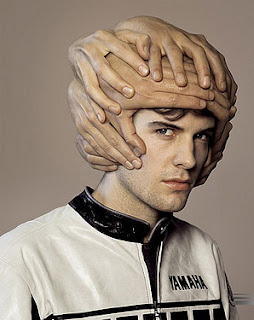Yesterday I rode Zebbie, my 1984 Mercian King of Mercia, through the brownstones and rowhouses of Queens and Brooklyn. Such a ride could easily involve a trip across the Kosciuszko Bridge, now that it has one of the better bike-pedestrian lanes in this city.
And so it was yesterday. Tourists on Citibikes almost always ride across the Brooklyn Bridge for the views. But no longtime New York resident does that. Rather, in-the-know Big Apple cyclists opt for the Williamsburg Bridge or, if we simply want a visually interesting ride, the Kosciuszko.
In the spring and summer, the view consists mainly of skyscrapers foregrounded by trees and the factories and warehouses along Newtown Creek. But the denuded limbs of winter reveal a landscape of differing verticalities. (Does that sound like a geeky phrase or what?)
When I lived in Manhattan and Brooklyn, one of my worst fears was--moving to Queens. Mind you, I took many good rides, and enjoyed other activities, in "the world's borough." But my first glimpse of it came from my family's car, en route to visit relatives:
Tell me, how would you feel about a place if the first thing you saw in it was a cemetery? I'm guessing that I probably saw it for the first time on a winter day like yesterday, with leafless trees screening, but not shielding, the tombstones.
But I did eventually move to Queens--to Long Island City, not far from where I live now. Since then, I've visited Calvary Cemetery. I know that there are tours of some of this city's necropoli, like Greenwood and Woodlawn. Anyone who has a taste for such things (which I do, sometimes) should also go to Calvary. Largely before of it, there are--wait for it--more dead than living people in Queens. (Thomas Wolfe once claimed, "Only the dead know Brooklyn." What would he have said about Queens?) In fact, more people are buried in Calvary than in any other American cemetery--or than live in Chicago!
Like Greenwood and Woodlawn, Calvary is the final resting place for some famous and infamous people, as well as everyday New Yorkers. Also in common with them, Calvary began after the 1840s cholera epidemic: At that time, most of Queens and the farther reaches of Brooklyn and the Bronx (the locations of Greenwood and Woodlawn, respectively) were rural. And there wasn't enough room left in Manhattan to bury the victims of that epidemic, so the city mandated that they be interred elsewhere.
All of those cemeteries have chapels large enough for masses or services. But Calvary has a full-blown cathedral (not visible in these photos) at least somewhat reminiscent of the Sacre Coeur in Paris.
It's ironic that those same trees I saw yesterday obscure the tombstones in spring and summer. Could their lush leafage during those seasons be nourished by the "residents" of Calvary?






